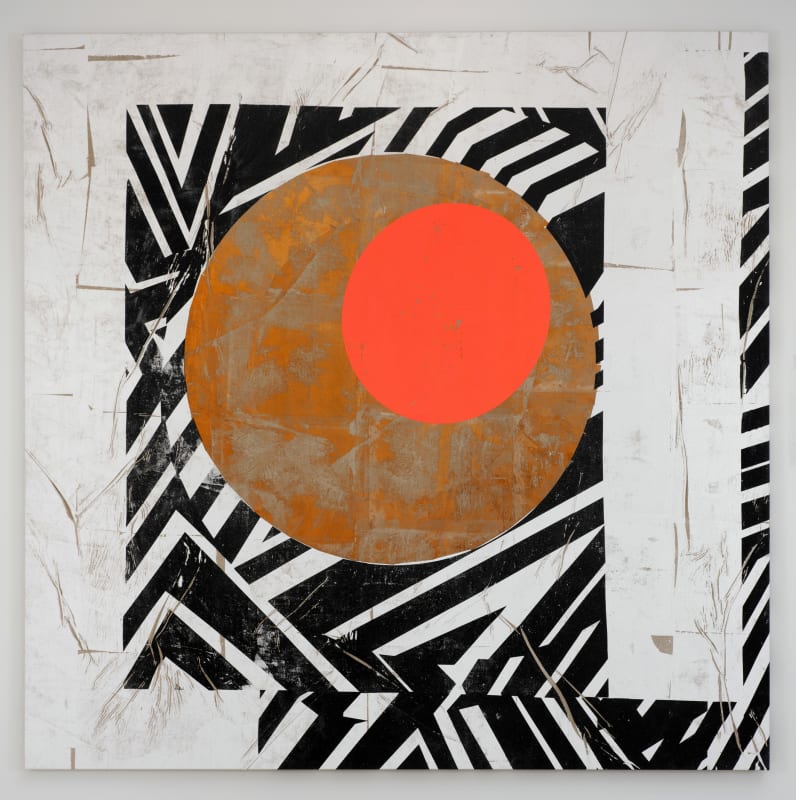Born in 1970 in Sydney, Australia. Lives and works in Melbourne, Australia.
With a BFA (Bachelor of Fine Arts) from the University of Western Sydney, Nepean, Sydney (Australia, 1990-1993) and a MFA (Master of Fine Arts), from COFA, University of New South Wales, Sydney (Australia, 1998-1999), Brook Andrew is among the most renowned artists of the Australia and Pacific Asia contemporary art scene. Brook Andrew was the Artistic Director of the 22nd Biennial of Sydney, in 2020.
Brook Andrew has had several international exhibitions over the past years including Denkmal at the Australian Embassy in Berlin (Germany, 2018), Inside the Depths of the Unknown - A New Line of Interpretation which as part of Deviant Practice at the Van Abbe Museum, in Eindhoven (The Netherlands, 2017), Fuselage as part of L'Effet Boomerang at the Musée d'Ethnographie in Geneva (Switzerland, 2017), The Right to Offend is Sacred at the National Gallery of Victoria in Melbourne (Australia, 2017), EVIDENCE at the Museum of Applied Art and Sciences (MAAS) in Sydney (Australia, 2015), Sanctuary: The Tombs of the Outcasts at the Ian Potter Museum of Art in Sydney (Australia, 2015), Intervening Time on the occasion of the 8th Edition of Asia-Pacific Triennal (APT8) in the Queensland Art Gallery & Gallery of Modern Art - QAGOMA, Brisbane (Australia, 2015), Witness at the Lyon House Museum in Melbourne (Australia, 2014), De Anima in the Bendigo Regional Gallery and at the RMIT Design Hub in Melbourne (Australia, 2014), Les Trophées Oubliés in le Musée d'Aquitaine in Bordeaux (France, 2013), Jumping Castle War Memorial at the FeliXartMuseum in Dragenbos (Belgium, 2013), Earth House as part of Echigo-Tsumari Triennial where he was the national representant of Australia (Japan, 2012), Warang at the Museum of Contemporary Art in Sydney (Australia, 2012).
His work has also been exhibited during many important exhibitions organized as in the Musée du Quai Branly - Jacques Chiract in Paris (France, 2020), at the 21st Biennale of Sydney (Australia, 2018), the National Gallery of Australia, Canberra (Australia, 2017), the Yinchuan Biennale, the Museum of Contemporary Art in Yinchuan (China, 2016), the Museum of Archeology and and Anthropology in Cambridge (UK, 2016), the Museum de Lakhenhal in Leiden (The Netherlands, 2015), the National Taiwan Museum of Fine Arts (Taiwan, 2015), the Perth Institute of Contemporary Arts - PICA (Australia, 2015), the TATE Britain in London (UK, 2015), the National Gallery of Victoria in Melbourne (Australia, 2015), the Museo Nacional Centro de Arte, Reina Sofia in Madrid (Spain, 2014), the Künstlerhaus in Vienna (Austria, 2013), the National Museum of China in Beijing (China, 2013), the MOCA in Seoul, (South Korea, 2011), the 17th Biennale of Sydney (Australia, 2010), the Museum of Contemporary Art in Sydney (Australia, 2012), the Iberia Center of Contemporary Art in Beijing (2010), the Jewish Museum (Berlin, Germany and Vienna, Austria, 2008), the Spertus Institute in Chicago (USA, 2008), the Smithsonian Institute - National Museum of Art History in Washington D.C (USA, 2007), the Fondation Ishibashi in Tokyo (Japan, 2007) or the Museum of Contemporary Art in Santiago (Chile, 2007).
Works by Brook Andrew have been acquired by Australian public and private collections including the Museum of Contemporary Art and the Art Gallery of New South Wales, in Sydney; the National Gallery of Victoria, the Vizard Foundation Collection and the BHP Billiton Collection, in Melbourne; the National Portrait Gallery and the National Gallery of Australia, in Canberra; the Queensland Art Gallery in Brisbane; the Art Gallery of South Australia in Adelaide; and also the ARTBANK collections. The National Museum of Contemporary Art in Seoul (South Korea) also acquired works by Brook Andrews for its collection.
In 2016, the Australian Research Council awarded Brook Andrew the prestigious bursary for his project; he was the winner of les Résidences Photographiques of le Musée du Quai Branly in 2016. In 2017, he profited of the Research Program « Smithsonian Artist Research Fellowship » as part of the Smithsonian Institute (USA). He taught at the Monash Art, Design and Architecture (MADA), Monash University, in Melbourne (Australia). From 2017, July to 2018, June Brook Andrew had been invited in residency at the Künstlerhaus Bethanien, Berlin (Germany).
Brook Andrew has been represented by la Galerie Nathalie Obadia, Paris/Brussels, since 2013.
